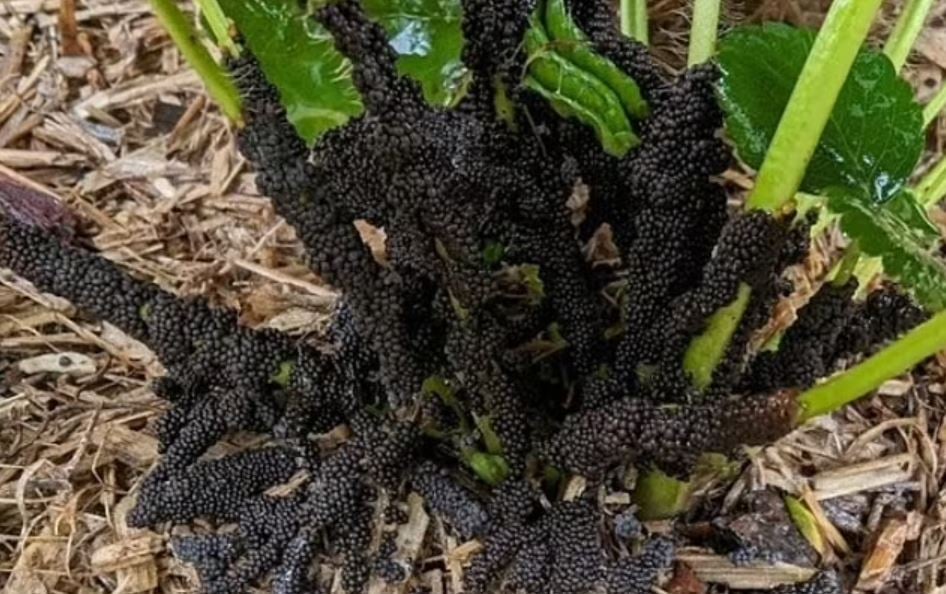
A gardener was baffled after finding a mysterious black substance growing on a strawberry plant in the yard.
The shocked resident lives in the north-eastern town of Eltham Melbourne found strange eggs under a plant. Curious about the strange discovery he uploaded the photos to Reddit Wednesday. The description says that the material resembles caviar.
The gardener wrote: “They appeared overnight on the strawberries. They appear to be eggs?” “Can anyone help determine what it is?” He asked then.
The images showed black spores growing along the base of the plant and up the plant’s stems. Small, round growths appear to sprout from the ground and take over the plant.
Residents said rainy and humid days may have caused small black drops to appear.
Many users who commented on the gardener’s post tried to guess what the gunk was and saw the funny side of the gardener’s dilemma.
“No raspberries,” one user wrote. “Raspberries? I actually thought so,” said another.
“Banned caviar,” said another.
The answer was more… simple
The suspicious droplets are actually a type of slime mold, which resembles a fungus.
Dr Kylie Agnew-Francis, a mycologist and medicinal chemist at the University of Queensland, said this species was often found in Melbourne.
“It looks like lindbladia tubulina to me,” Dr. Agnew Francis said. Hey ho. “There are some sightings of this kind this way…”
Lindbladia tubulina is a single-celled organism that is not considered a plant, animal, or fungus. There are more than a thousand species of slime molds worldwide, and they eat bacteria, fungi, and other forms of nutrients to grow.
It is not believed to be harmful to humans, but it is not yet known whether it is toxic.
“If it doesn’t cover all the leaves, I doubt there will be any long-term damage. They come and go very quickly,” Dr. Agnew-Francis said.
This species grows in large groups in different parts of Australia.

“Hipster-friendly coffee fanatic. Subtly charming bacon advocate. Friend of animals everywhere.”





More Stories
F-16 crashes in Ukraine – pilot dies due to his own error
Namibia plans to kill more than 700 wild animals to feed starving population
Endurance test for EU-Turkey relations and Ankara with Greece and Cyprus